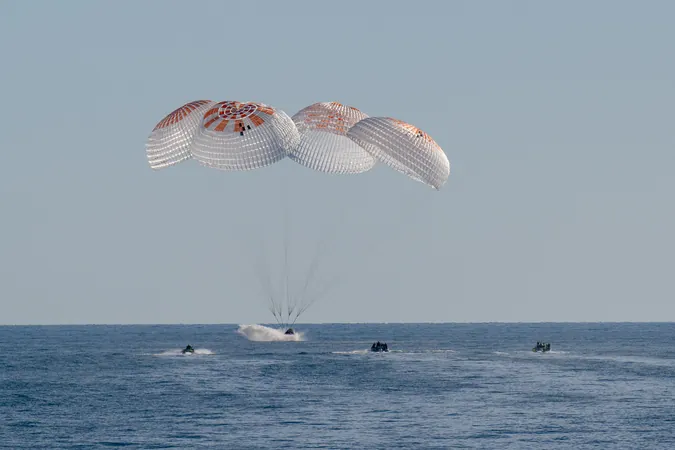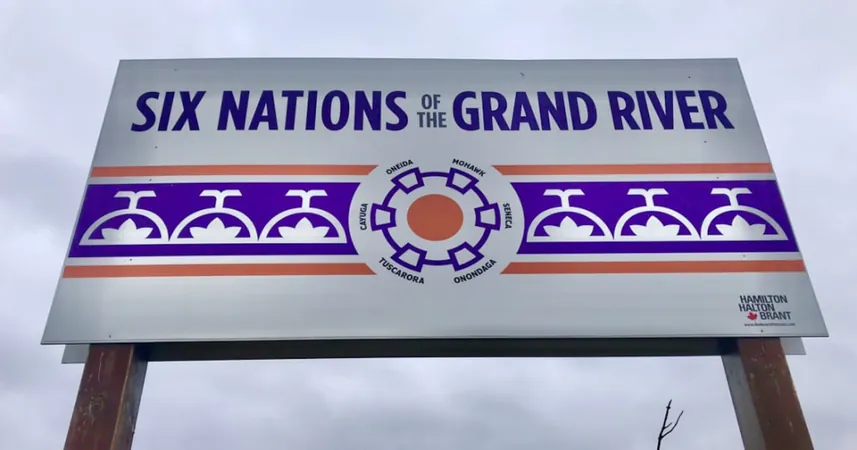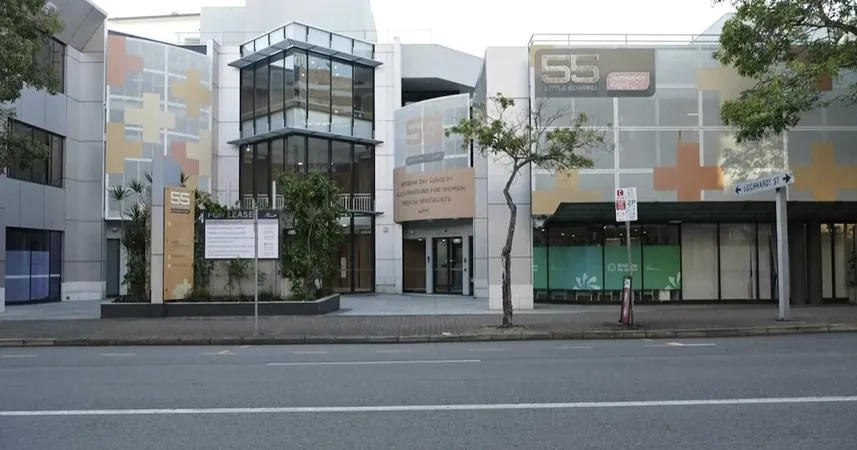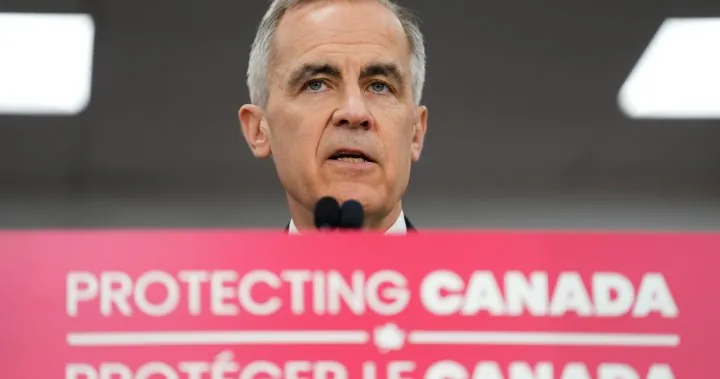
NASA's SpaceX Crew-9 Returns: A Scientific Triumph Aboard the International Space Station
2025-04-07
Author: Jacques
In a historic mission that marks a significant milestone in space exploration, NASA's SpaceX Crew-9 has successfully returned to Earth after a remarkable stint aboard the International Space Station (ISS). The crew, consisting of NASA astronauts Nick Hague, Suni Williams, and Butch Wilmore, alongside Russian cosmonaut Aleksandr Gorbunov, touched down safely on March 18, 2025, off the coast of Tallahassee, Florida, with a pod of dolphins joyfully greeting them.
The Crew-9 mission was noteworthy not only for its remarkable scientific advancements but also for the individual achievements of its members. Both Williams and Wilmore made headlines earlier in 2024 as they became the first crew to fly aboard Boeing's Starliner spacecraft during its crewed flight test, launched from Cape Canaveral on June 5. Their pioneering efforts are paving the way for future crewed missions as NASA works to certify Boeing’s CST-100 Starliner system.
Over the course of their mission, the Crew-9 team executed over 150 unique scientific experiments, utilizing more than 900 hours of research time in the microgravity environment of the ISS. Their experiments spanned various fields, including advancements in plant growth, the potential of stem cell technology for medical applications, and investigations into the effects of spaceflight on materials. These insights are vital as humanity sets its sights on future deep-space explorations.
The beginning of 2025 was particularly eventful for Crew-9, featuring two spacewalks where they performed critical tasks such as removing aging equipment, collecting microbial samples, and conducting repairs on important research instruments. Notably, Williams set a historic record for the most cumulative spacewalking time by a woman, amassing an impressive 62 hours and 6 minutes, ranking her among history's most experienced spacewalkers.
While in orbit, Crew-9 took time to inspire the next generation of scientists and explorers through 30 ham radio events, allowing students worldwide to connect with them and ask questions about their work and experiences in space. Their efforts also included promoting a student-led genetic experiment, fostering educational engagement that could motivate future generations.
The mission included unexpected challenges, with technical issues related to Starliner resulting in an extended stay at the ISS. However, both Wilmore and Williams expressed enthusiasm at the opportunity to be part of this critical testing phase, with Wilmore saying, “I’d get on it in a heartbeat,” emphasizing the program’s potential moving forward.
Upon their return to Earth, the crew received a warm welcome at Johnson Space Center, greeted by families, teammates, and NASA officials who praised their outstanding contributions to space science and human exploration. Emotional reunions highlighted the importance of teamwork and sacrifice in the name of scientific progress.
The journey was also marked by adjustments in crew assignments, as astronaut Zena Cardman, initially slated for Crew-9, will now lead NASA's SpaceX Crew-11 mission set to launch soon. This reinforces the flexible nature and collaborative spirit essential in human spaceflight endeavors.
With a wealth of experience, Wilmore has spent 464 days in space across three flights, while Williams has made history not just as a spacewalker but also as the first person to run the Boston Marathon in space, showcasing her adventurous spirit and commitment to exploration.
Hague, a seasoned astronaut with 374 days in space, noted the importance of international collaboration in space missions, stating, “The magic of human spaceflight: it brings people together,” highlighting the global effort behind such groundbreaking explorations.
As Crew-9’s journey concludes, it signifies a hopeful era for space exploration—one fueled by innovation, resilience, and the enduring human spirit that strives to reach beyond the stars. The adventures of Crew-9 are just the beginning, as NASA and its partners set their sights on ever more ambitious missions in the universe.









 Brasil (PT)
Brasil (PT)
 Canada (EN)
Canada (EN)
 Chile (ES)
Chile (ES)
 Česko (CS)
Česko (CS)
 대한민국 (KO)
대한민국 (KO)
 España (ES)
España (ES)
 France (FR)
France (FR)
 Hong Kong (EN)
Hong Kong (EN)
 Italia (IT)
Italia (IT)
 日本 (JA)
日本 (JA)
 Magyarország (HU)
Magyarország (HU)
 Norge (NO)
Norge (NO)
 Polska (PL)
Polska (PL)
 Schweiz (DE)
Schweiz (DE)
 Singapore (EN)
Singapore (EN)
 Sverige (SV)
Sverige (SV)
 Suomi (FI)
Suomi (FI)
 Türkiye (TR)
Türkiye (TR)
 الإمارات العربية المتحدة (AR)
الإمارات العربية المتحدة (AR)